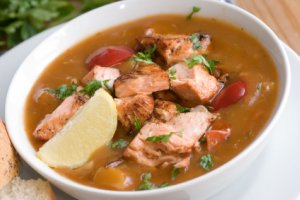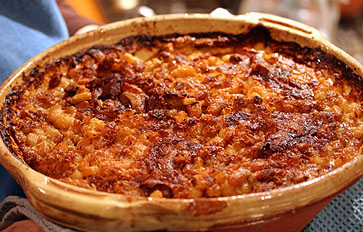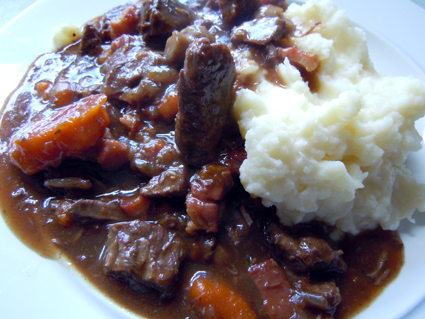French food and drink
The no BS guide to eating and drinking like the French
French food and drink are famous throughout the world. The best chefs are French born or trained, the cuisine is one of the most popular anywhere. And the wine sets the standard for everyone else. Everyone knows champagne, Bordeaux and burgundy. Even if they don’t drink it. And then there’s cognac, brandy and amazing French liqueurs.
But the annoying thing about French food and wine is that it has become so snobbish. Not in France I hasten to add. But because of pretentious ‘experts’ who love to pontificate about classic dishes and demonstrate their in-depth knowledge of a 1922 vintage red.

But you don’t have to pay hundreds of pounds for a bottle of wine. Nor eat tiny portions of art that leaves you hungry and craving a McDonalds on the way home. The French certainly don’t.
Traditional French food is simple, comforting and tasty. Give a French cook a humble potato and you’ll be amazed at the wonderful food that comes back. And as for drinks – there’s some gorgeous wines and spirits that you can pick up that are incredible.
And you don’t have to stick your nose in a wine class and claim you can smell tobacco, rustic fences and the waving meadow grass.
So, after that bit of a rant here’s our no BS guide to French food and drink. On this page you’ll find our top five traditional French foods to try. We’ll also give you a starter session in French wine and liqueurs.
Finally, we’ll point you in the right direction to learn even more about the best French food and drink.
French food and drink -
Five essential dishes
When you visit France you're spoilt for choice when it comes to food. There's so much choice. So many fantastic things to try. I defy anyone to walk by a pâtisserie in any city, town or village without drooling.
But we've tried to narrow things down for you with our choice of five traditional French dishes you simply must try when you visit France. Or try to recreate them in your own kitchen.
1. Bouillabaisse
This renowned fish dish was created, like many French ‘classics’, as a poor people’s platter. Marseille fishermen boiled up for themselves the fish they couldn't sell. These days, bouillabaisse has tipped over into top-end dining, and many restaurants claim to be the only one with the ‘authentic’ recipe, when, in reality, the very ‘use-whatever-is-available’ fundamental means that there can be no definitive recipe: but don’t go for cheap versions.

It comes in two servings – first a fish soup, with croutons and a rouille sauce, then a platter of different sorts of fish. The entire dish is a huge undertaking, and best eaten at a steady pace, with no intentions of doing anything else with the rest of the day except walk (or sleep) it off.
Where to try it: Marseille, especially at Le Miramar, which is where I was shown round the kitchen before being presented with the dish. Be sure to take a hearty appetite…or some friends.
2. Tartiflette
This is something I make at home, a tasty Savoyard dish of potatoes, bacon and onions covered in Reblochon cheese. This is irresistible comfort food, probably invented in to increase the sales of Reblochon cheese.

Where to try it: In the Haute-Savoie, for sure, although the first, and most recent times I’ve had it have been in Gavarnie in the Pyrenees, but, admittedly, the chef was from Chamonix.
3. Cassoulet
This speciality of the French south-west, between Toulouse and Carcassonne has a chunky meatiness, very much from the stick-in-the-ribs department. Toulouse, Carcassonne and Castelnaudary regularly come to blows on the subject.

Where to try it: I’ve tried it in all three of those places, but the most evocative was in the citadel in Carcassonne, late in the evening once all the tourists had gone.
4. Beef Bourguignonne
This unbeatable, wine-rich beef dish (bourguignonne = burgundian, incidentally) goes a treat served with creamy mashed potatoes, or, if you want to be rather less splash-and-dash when you’re eating in company then try it with gratin Dauphinois, and a bit of shredded cabbage cooked with juniper berries.

Where to try it: In Dijon, is the logical place, but you can get this in one form or another pretty well anywhere in Burgundy, and beyond.
5. Aligot
Many of the 'lovies' who spout nonsense about French food and drink will turn their nose up at aligot. More fool them.
Aligot is one of the oldest traditional dishes originating from the Aveyron in the Midi-Pyrénées. It's a really simple dish of yummy cheesy potatoes – and it is stretchy......! The French have many recipes for the humble potato, but they manage to turn them into the most wonderful dishes.

It is said that the origins of Aligot began with the monks who made the very first dish, but used bread until the potato was introduced into France. They made the dish with their home-made bread and the local cheese to satisfy the hungry pilgrims who passed their way.
Where to try it: Almost every restaurant in Aveyron serves aligot; you can even buy it in the weekly markets.
French food and drink -
let's talk about wine
French wines and French food it's a marriage made in heaven. They go together so well, it is a way of life in France that is second to none.
French wine is of course world famous and the quality is exceptional. The quality depends on the variety of the grape it is made from, the wine regions of France it is grown and of course, the climate during that wine growing year.
And so it is also with their French liqueurs and spirits, they are all of such good quality and are so good as drinks or in your favourite recipes!
types of French wine
Full Bodied Reds
The Burgundy and also the Rhones are examples of this type. They can be served with duck, goose, offal, game and some cheeses such as the famous Roquefort.
Light Bodied Reds
These include Clarets from the Medoc or Graves district of France. They can be served with poultry, veal, lamb, beef, ham, game, foi gras, and some soft cheeses such as Camembert.
Full Bodied Dry Whites
These are served with fish, poultry and also veal in creamy sauces. Examples here are Cotes Du Rhone, White Burgundy or Graves.
Light Dry Whites
A good example of a light dry white is a good Riesling from the Alsace region, a Muscadet or Chablis. These are excellent with fish, cold meats, egg dishes and entreés.
Sweet Whites
These (not the champagnes) are wonderful with desserts, creams, soufflés, and of course wonderful French cakes!
Rosés
Rosé are so versatile, they can be served with most food but particularly with cold dishes, patés , egg dishes and pork.
Champagne
Champagne is mostly served as an apéritif or at the end of an evening but it can also be served with the whole meal.
Dry champagne is served as an apéritif, with foi gras, nuts and dried fruit. Sweet champagne is served with desserts and pastries.
Best wine to choose with your meal
It can be overwhelming if you are a novice drinker as there is so much choice. However, on a personal level, I feel that you can enjoy any with your meal as long as you enjoy them together, that is good!
However if you would like a few tips on which to drink with your meal here are a few basic guidelines which you may find helpful.
Basically your wine should complement the food and not overpower it. A robust type would overpower a delicate dish; a dry one would taste sour if drunk with a sweet dessert.
I particularly enjoy Daube which is a very tasty, slow cooked casserole. A good example here would be a Burgundy red as this would go wonderfully well with the rich meaty casserole (and in fact for cooking the dish). A Burgundy would also be good with a dish of rabbit and prunes – delicious!
Cooking with French wine
We can't talk about French food and drink without mentioning how well they mix. Wine is often included in French cooking as they enhance the flavours of the dish. It is not the alcohol but the actual flavour which does this.
It is always best to use a good quality as the results will be far better.
Reds used in cooking are usually good full bodied types. An example here would be a lesser Burgundy such as a Macon or a Claret such as Saint-Emilion.
White is best if using a dry but not sweet. A white Macon from the Pinot Blanc or the Chardonnay grape is suitable.
Fortified, spirits and liqueurs are used for flavouring a dish as in a sauce, gravy or desserts. They are often expensive but only a small amount is used. An example of these are Cointreau, Grand Marnier, Madeira and Brandy.
All about French wine
Wine is produced from a number of grape varieties, such as cabernet sauvignon, chardonnay, pinot noir, sauvignon blanc, syrah and others.
There are two key elements that apply to French wine. The first is the untranslatable notion of terroir. There's more on this further down the page but basically its a concept that combines locality, earthiness of the soil, climate and a range of intangibles, all of which contribute to the quality of the wine.
The other is the Appellation d'Origine Controlée (AOC, for short), which sets down very strict rules governing the production of wine whether at regional level, for individual villages or even for specific vineyards. The AOC classification is gradually being replaced by Appellation d'Origine Protégée (AOP).
Understanding the label
In addition to the mention of AOC, which is a guarantee of place and method of production, the labels on wine bottles tell you more.
Grand cru is a distinction that has applied since 1855 to the best estates in the Médoc, and these produce some of France's finest wines; there are no fewer than 61 estates producing wines of this quality.
Cru bourgeois are wines from estates in the Médoc and Haut Médoc not classified in the 1855 listing. These wines are excellent, too, but they are invariably cheaper than Grand cru wines, and represent outstanding value for money.
VDQS (Vin Délimité de Qualité Supérieure) is the second highest qualification for wines, below AOC, and accounts for around 2% of all French wines. VDQS wines are from geographically limited areas like Provence, Languedoc-Roussillon and the Loire valley. Quality can be variable, and some vineyards that are VDQS are trying hard to become AOC. Find the ones you like, and stick to them.
Vin de Pays wines account for around 15% of wine production, and come from a specific area, but do not have the AOC or VDQS label. These tend to be top end wines for everyday drinking. Excellent value for money and good quality, too.
Vin de table is ordinary, cheap, usually inoffensive, everyday table wines, also known as 'Vin Ordinaire'. Cheap, but not necessarily nasty. But equally, not for special occasions either.
French food and drink -
understanding French wine
No, I'm not going to launch into a windy lecture on wine. This is the no BS guide to French food and drink remember. But here's a few pointers so you can impress the local wine snob with your knowledge.
1. Terroir is what it’s all about
One of the keys to French wine is what the French call terroir. Unfortunately few are able to define ‘terroir’ in a way that non-French can follow. But it’s a vague amalgamation of many things: where the grapes are grown, its particular climate and type of soil; these all make a difference to the wine you get. So, French wines are usually named after the place they come from, rather than the type of grape, although there are exceptions, e.g. Malbec.
2. What you need to know is on the label
The label on the wine bottle gives you all the information you need to know about the wine. The name tells you where the wine comes from – Chateauneuf-du-Pape, Sancerre, Gigondas, etc. The label also tells what year the wine was produced. And many labels tell you who made it – Château Romanin or Domaine Mayard although don’t expect this level of detail on middle-of-the-road table wines.
3. Grapes and vintage
The name of the wine tells you what grapes are used. Sometimes it’s just one grape, sometimes it’s a blend of different grapes. Check the back of the bottle; the grapes are often listed there.
The year the wine was produced — the ‘vintage’ —is important because quality can vary depending on the weather each year.
Note: “vintage” does not necessarily mean that the wine is old. ‘Vintage’ simply means that all the grapes were grown in one year. A non-vintage (NV) means the wine was made from grapes grown in multiple years.
But it would be a mistake to only concentrate on wine when you think about French drinks. France is justifiably famous for its liqueurs. And if you enjoy cocktails you'll love French liqueurs.
The most famous of all is Cointreau. Like most liqueurs Cointreau is best served on its own over rocks. But of course there's many cocktails which include it as an essential ingredient.
But there are so many wonderful liqueurs. Another famous name is Grand Marnier. As well as being a wonderful drink in its own right it's also used extensively in cooking. Parfait Amou means perfect love and you'll be head over heels when you try this violet beauty.
There are so many great liqueurs we've put together out top 14. You can see our list of great liqueurs here.
French food and drink
related articles
Recent Articles
-
French Food and Drink - No BS Guide for lovers of Food, Wine, Liqueurs
Aug 28, 19 03:18 AM
Our guide to French food and drink for those who love traditional French food along with our no BS guide to understanding French wine and liqueurs
-
Things To Do In Carcassonne The Ultimate Tourist Guide
Aug 24, 19 06:26 PM
The ultimate tourist guide to things to do in Carcassonne when you visit this wonderful town in Aude France. Discover the places to go and see in Carcassone.
-
Lyon Old Town Guide to Vieux Lyon
Aug 18, 19 07:48 AM
Your complete guide to Lyon old town otherwise known as the Vieux Lyon. Don't miss this amazing part of the city if you're visiting Lyon in France.
-
18 French Villages You Must Visit Most Beautiful Villages in France
Aug 17, 19 06:31 AM
Our guide to the 18 most beautiful French villages you simply must visit. Loads of info, photos and facts in our ultimate villages in France tourist guide
-
What a Pissoir - The True Story of France's Unique Urinals
Aug 13, 19 03:47 PM
Is there anything more French than a pissoir? Sadly on the decline nevertheless the pissor is an endring image of the country. This is their story





